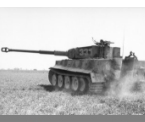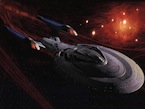RyanCrierie
Posts: 1461
Joined: 10/14/2005
Status: offline

|
To elaborate further on this:
Eddy Sterckx's comment about the best programming language for wargames being "The one which you are most familiar with," explains I think some of the choices -- the programmers used what they knew best.
Look at WITP:AE and TOAW III.
The game engines used by both go have a lot of heritage:
WITP:AE's engine goes back to the original WITP (2004) which in turn goes back to Uncommon Valor (2002), and in turn all the way back to 1999's Talonsoft's 12 O'Clock High: Bombing the Reich and Battle of Britain -- the last of which ran on a Pentium and recommended 64MB RAM, of which 16-20 MB were used for Win95/98.
Plus, Grigsby's experience in programming before the above games was:
Steel Panthers (1995) which ran on a 486DX and 8 MB
War in Russia (1993) which was a 386 and 640 KB
Pacific War (1992), which was a 286 and 640 kb.
Panzer Strike (1988), on Apple II or Commodore 64
Likewise, for TOAW III; the basic engine goes all the way back to 1998, when it was just Windows 95/96 and 16 MB of RAM required.
Norm Koger before that worked on:
Age of Rifles (1996), 486 DX2, 8 MB
Tanks (1994), 386, 2MB
Conflict: Korea (1992), 286 and 640KB.
Conflict Korea, if you look at the screenshots on Mobygames is VERY much the prehistoric "TOAW"; due to the similarity of game concepts you see show up later in TOAW.
You can see how when you started out doing a complex simulation of either Korea, the ENTIRE Pacific War or Russian Front on just 640 KB RAM, you'll be used to working "close to the metal" to get as much performance from the hardware at the time; and as you move forward in your career, you'll stick with the languages you know and trust the best.
_____________________________
|
 Printable Version
Printable Version







 TIA...
TIA...




 as Microsoft killed XNA back in 2013.
as Microsoft killed XNA back in 2013. 

 New Messages
New Messages No New Messages
No New Messages Hot Topic w/ New Messages
Hot Topic w/ New Messages Hot Topic w/o New Messages
Hot Topic w/o New Messages Locked w/ New Messages
Locked w/ New Messages Locked w/o New Messages
Locked w/o New Messages Post New Thread
Post New Thread